Kioxia has a new drive, the Kioxia FL6 NVMe SSD. Unlike most SSD releases these days, Kioxia is not focused on pushing into new realms of $/GB for flash with QLC NAND with the FL6. Instead, Kioxia is using its XL-FLASH technology to move to the other end of the spectrum.
Kioxia FL6 SSD with 60 DWPD XL-FLASH SLC
Kioxia is still using its BiCS flash 3D NAND for the FL6. Let us be clear that while the company is focusing on more storage class memory (SCM) “-like” applications, it is not using an exotic medium like Intel Optane. Instead, it is using new NAND with an older standard, SLC. SLC stores one bit per cell making is much less dense than MLC (2-bits per cell), TLC (3-bits per cell), and QLC (4-bits per cell) that we commonly see in SSDs. TLC and QLC are popular these days to maximize capacity and therefore $/GB. One loses endurance and performance in the process of getting that density and that is what XL-Flash reverses.
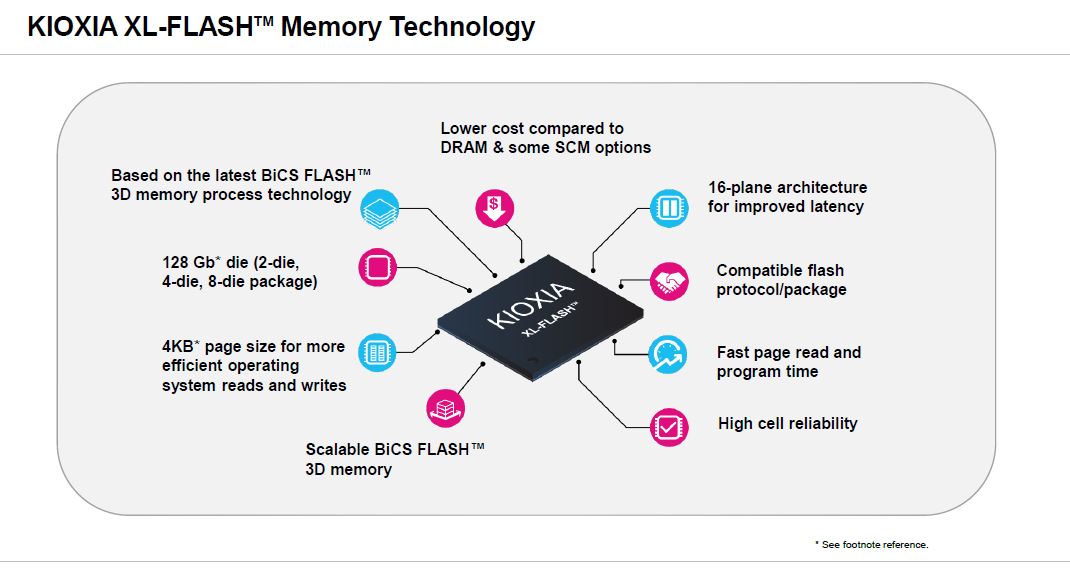
Some of the key benefits of using SLC is that it has better performance characteristics, especially with modern SSD controllers than TLC and QLC SSDs that are focused on capacity. There are also 16 planes per die, roughly four times the number of a normal consumer chip for lower latency. The algorithms are less complex, reading bit states is clearer and easier, and programming cells takes less time. As a result, Kioxia can offer a lower-latency solution.
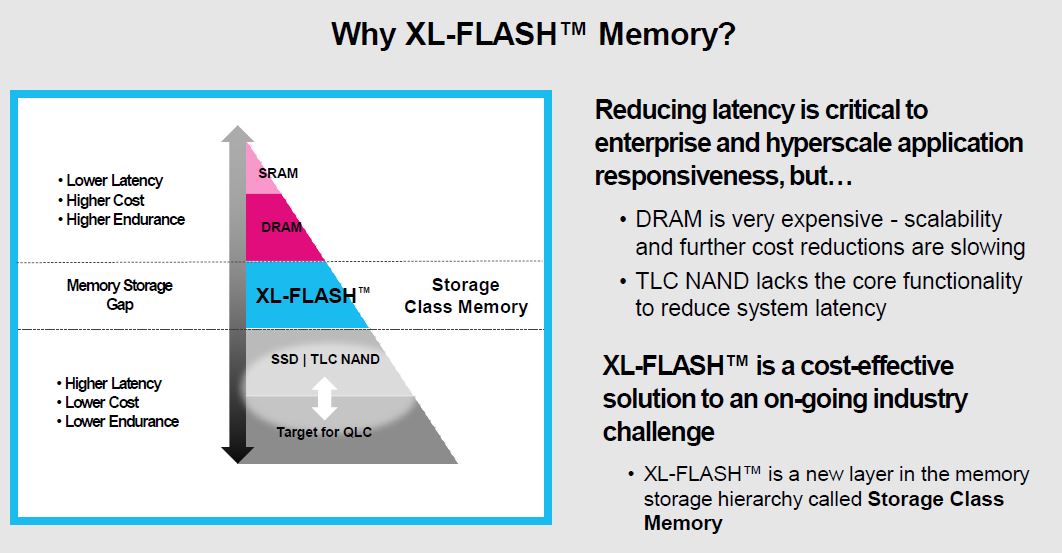
The Kioxia FL6 takes the XL-FLASH memory and puts it into a SSD form. Between PCIe Gen4 dual-port connectivity and the SLC NAND, it offers more performance than previous drives. Capacity wise it ranges from 800GB to 3.2TB. Also, since it is a PCIe device that can hit 3.2TB per drive, it can hit 76.8TB in a 24x 3.2TB configuration meaning it can scale way beyond SCM-based persistent storage solutions.
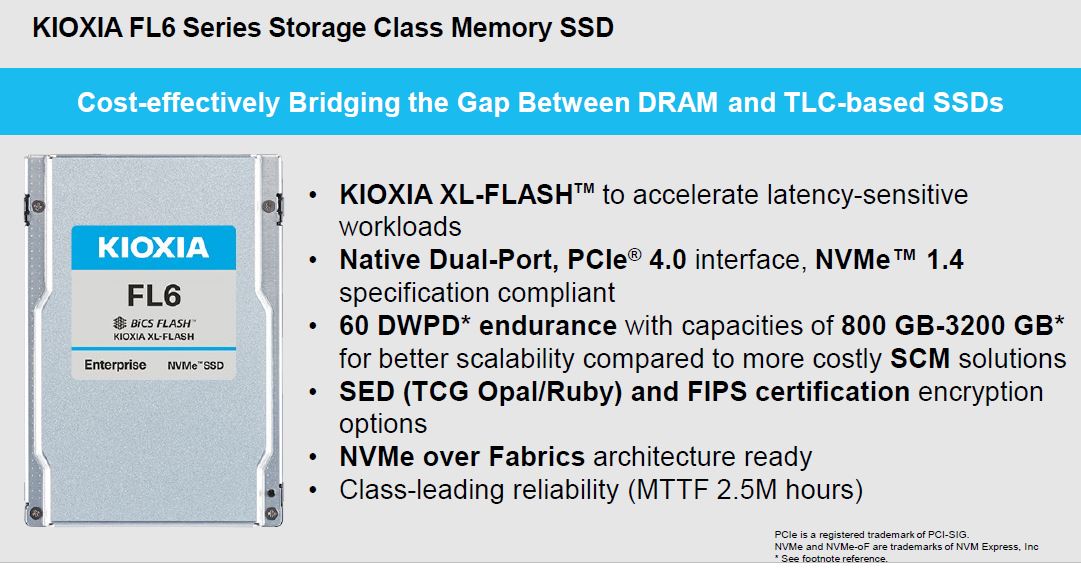
Endurance is a full 60 DWPD so that should not be an issue for most applications. Kioxia is saying the drive is NVMeoF ready to support low-latency network storage solutions as well.
Final Words
The Kioxia FL6 is the company’s answer to Samsung Z-NAND and in some ways also Intel Optane SSDs. Unlike SCM that goes into memory channels, it can offer higher capacities albeit at the expense of going over PCIe. Of course, this is the 2021 technology. When we look to CXL 2.0 and beyond when we will see more use of CXL memory, a device like this will become even more desirable with the ability to share it over a CXL fabric. Still, it is great to see another entry in the high-performance SSD space especially as trade-offs continue to be made at the other end of the spectrum seeking maximum capacity per dollar.

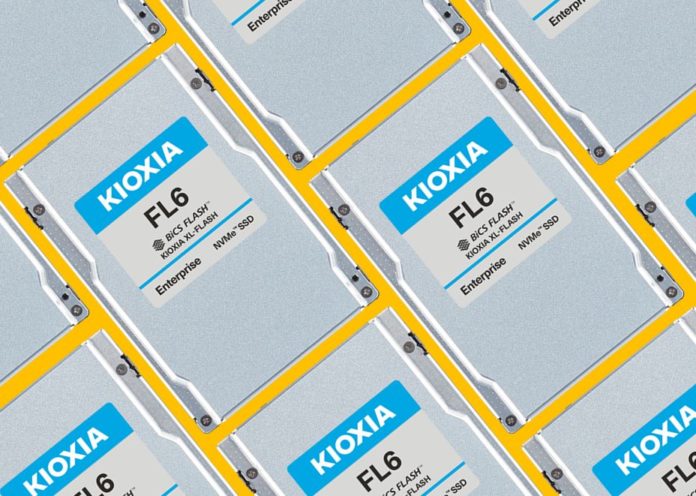


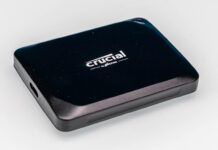
I’ve been waiting for the SSD industry to try this approach since the first MLC drives were released. I’d even be willing to pay a price premium for these.
Thank-you Toshiba, err Kioxia.
@B5Geek: “willing to pay a price premium” – as though they’ll give you a choice!
Speaking of CXL, I was thinking how cool this would be to in an EDSFF. Going a crazy-sauce step forward, have a 1U box filled with these, plus a whole bunch of RAM (same box), and some logic to handle tiering of memory. More levels of cache/memory/storage!
Ok. How much?